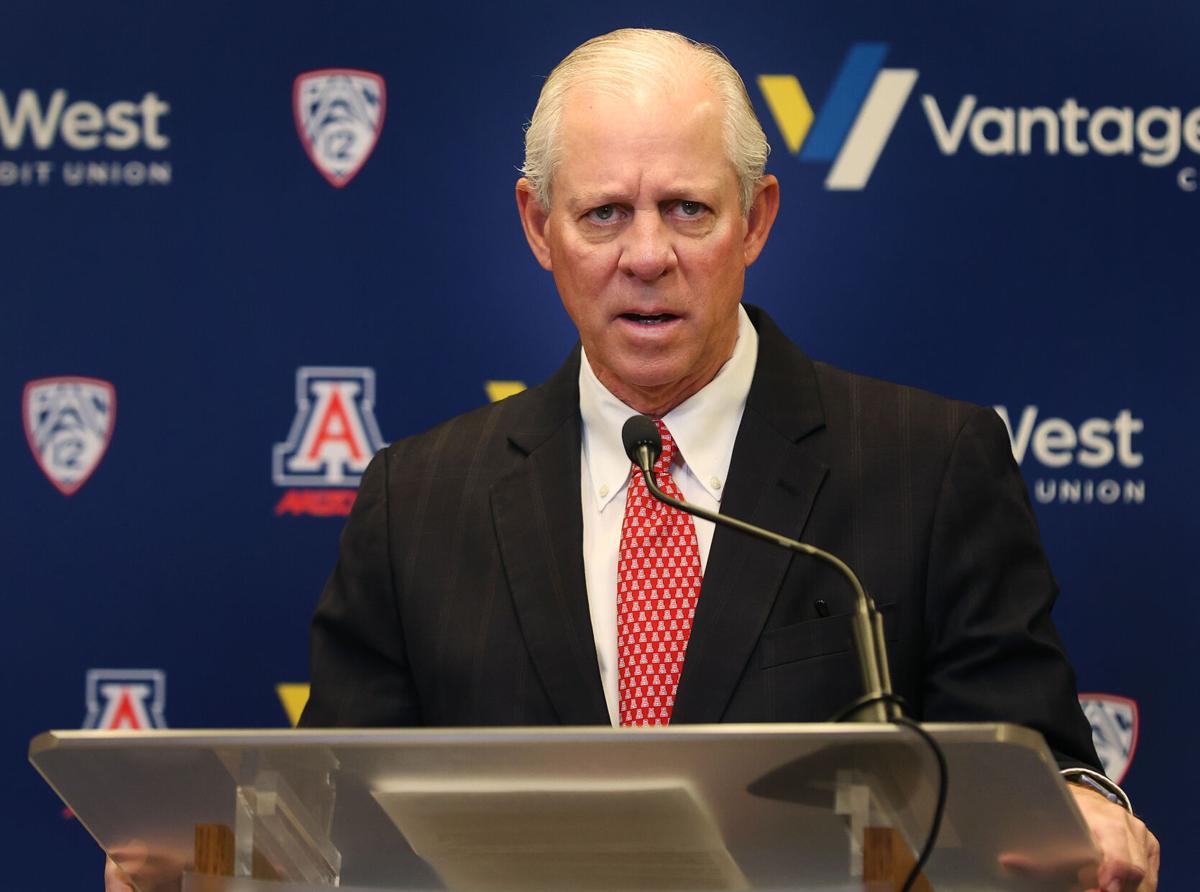The 39-page position profile released by the University of Arizona amid its presidential search features information about the university’s research prowess and excellence in athletics — but nothing about the $162 million deficit facing the school.
There is, however, mention of the financial expertise the search committee hopes to see in the university’s next president. The candidates, according to the document, must have “demonstrated financial acumen, including understanding the consequences of financial and budgetary decisions and a record of success in creating financially sustainable budget models for large, complex organizations.”
The formal position profile, created by SP&A Executive Consulting with input from the presidential search advisory committee, features institutional priorities for a new UA leader, including creating a “culture of communication, transparency and collaboration that builds trust.”
Alberto Pimentel, co-founder of the consulting firm, has said conversations about the university’s financial troubles will be had with candidates. The group purposely decided to exclude the information from written materials.
The search advisory committee will begin reviewing applications “immediately” and will “continue to accept applications and nominations until the position is filled.”
The search comes after UA President Robert C. Robbins, amid the university’s financial crisis that he accepted blame for, announced he will resign by June 2026. Robbins said he will step down earlier if the Arizona Board of Regents finds his successor sooner.
“The University of Arizona is far more than its balance sheet,” a spokeswoman for the regents told the Arizona Daily Star on Friday. “It’s filled with top-notch students, faculty and staff passionate about what it means to be a Wildcat. All top prospects will have a clear understanding of the university’s finances prior to being asked to an interview with the full board.”
The spokeswoman added that the committee was “focused on highlighting in these recruitment documents what makes the University of Arizona a unique place to work and Tucson a beautiful place to live” when crafting the position profile.
High up on the priorities for the next president is to support the university’s shared governance environment, which has been under fire from some Republican lawmakers this year. Robbins, and the regents have been neutral about House Bill 2735, which aimed to reduce the role of shared governance in the state’s three public universities.
“The president must be committed to the principles of shared governance and must foster a transparent and inclusive environment in which the administration listens and acknowledges the faculty’s perspective on the university’s current and future direction, and opportunities for the U of A’s continued academic and research excellence and prominence,” the position profile says.
The document boasts about the controversial University of Arizona Global Campus project, which has students who are “part of the U of A’s community.” There is no mention of the potential $72 million fines that the university may be ordered by the U.S. Department of Education to repay from when UAGC was under a different owner and known as Ashford University.
Candidates are expected to have earned a “doctorate or other terminal degree and an outstanding profile of distinguished scholarship and teaching, suitable for a tenured appointment as a full professor,” according to a separate document detailing favorable leadership qualities.
In multiple public meetings earlier this spring, presidential search advisory committee members agreed that the university’s next president should come from a higher education background rather than a business or politics field.
Additionally, the search committee hopes to speak to candidates who can work to enhance the student experience, facilitate a compelling global vision for the future, promote philanthropic efforts, develop new revenue streams and “strategically manage resources.”
“As a public institution committed to serving the public good in an environment of limited resources, the president must couple thoughtful, collaborative processes with strategic, decisive action to capitalize on current and future opportunities,” the document reads. “This will require the clear identification and articulation of institutional priorities, the implementation of sound business and financial practices, the reduction of inefficiencies and the allocation of resources in a disciplined, transparent and strategic manner.”
The university also offered up a number of statistics to entice potential candidates. According to the documents, 52.5% of the first-year student population are Arizona residents, with 43.2% non-residents and 4.3% international. Forty-nine percent of the first-year class self-identified as ethnicities other than white in the fall of 2023 and the one-year retention rate of all first-year students is 87.7%. The UA’s six-year graduation rate is 65.9%.
Get your morning recap of today's local news and read the full stories here: tucne.ws/morning





